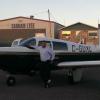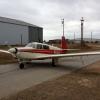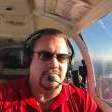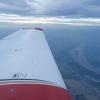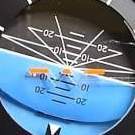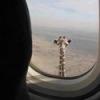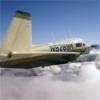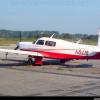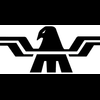Leaderboard
Popular Content
Showing content with the highest reputation on 10/25/2015 in all areas
-
Well found a very knowledgable person at my local hardware store, got a product called goo buster, was told to apply it using a q-tip cotton swap and it did wonders, removed all the spots and then put on a leather cleaner and conditioner, seats look like brand new... That is a big relief, it would have been shitty if otherwise...4 points
-
3 points
-
Has anyone else noticed how little information is available about the real cost of major maintenance? As I'm winding up my firewall-forward project, I'm considering releasing a line-by-line cost breakdown. Does anyone have any thoughts about why that might not be a good idea? If any non-flying spouses see this post, just tell them I got ripped off and you paid a lot less.. Or maybe we could play 'The Price Is Right' and let everyone guess. Here's an {almost} complete list of work performed: TSIO-520-NB Overhaul & Test Run by Certified Engines http://www.certifiedengines.com/ Magnetos & harness Starter Fuel injection system Oil cooler Intercoolers Turbocharger, controller, PRV, & waste gate Camshaft Crankshaft Prop overhaul by Palm Beach Propeller http://www.pbapi.com/ Prop governor overhaul prop blades overhaul new hub Millennium cylinders (new) Gami nozzles (new) Tempest fine wire spark plugs (new) Hoses (all new) Exhaust (overhaul by Rocket Engineering, replaced five sections, re-welded, polished) Engine Mount (overhaul by Rocket Engineering, replaced two tubes, re-welded, powder coated) Vibration mounts We definitely got in to the "while the engine is off, we might as well..." mode of thinking. That's what happens when you have access to a maintenance hanger and your -IA lets you do a lot of the grunt work. I've learned more about how everything works in the past three months than I did in the past twenty-five years of GA flying.2 points
-
Trick question. Hank will never catch Bonal if they cruise at the same speed. My Saturday evening math shows that Hank will arrive 24 seconds after Bonal, assuming they both instantly accelerate to cruise speed at the top of the climb. Total flight time: Hank, 39 minutes, 19 seconds. Bonal, 38 minutes, 55 seconds.2 points
-
2 points
-
I keep a spray bottle with mineral spirits to wipe down my right side gear door. My mechanic told me to quit obsessing - Mooneys leak. Lee2 points
-
That under wing photo is filiform corrosion. After you strip it it looks darker than the surround aluminum. You must remove all this to a shiny later before acid etch, alodine, primer and paint. Red scotchbrite by hand is preferred to remove the corrosion for local small areas use a red scotchbrite on a twist loc in a drill Variprime etching primer is ok for spot jobs, but it's soft since it's a lacquer. It actually must be primed over. For a whole plane the best you can buy is a MIL-P23377 strontium chromate epoxy primer. One coat then topcoat it. Note do not let stripper, acid or alodine into any lap seams or under any screws or inspection panels. Tape these with aluminum tape. Further, alodine and chromate primers contain hexavalent chromium which kills you slowly, or at least takes your golden years from you. Wear a bunny suit with a N95 organic solvent cartridge respirator when working with this stuff. I just stripped the front half of my wing to profile it with micro balloons and epoxy filler primer. It had a few areas like you have.2 points
-
1 point
-
so here is one for the math guys. Hank and Bonal are both flying from point A to B and since the runway is 100 feet wide they feel like showing off and take off together. Hank likes to climb at 100mph and 1000fpm Bonal likes to climb at 120mph and gets 800fpm and both want to fly at the same altitude of 7500 feet. The airports are at sea level and its a 100 mile flight. Since both aircraft (airplanes) fly at 165mph true who would arrive first. Since Hank will reach his target altitude sooner how long would it take for him to catch Bonal.1 point
-
Guess what folks. Mooney is making a model with two (2) doors. One on each side of the cockpit. The designation will be the "T" and "U" model of the Ovation and Acclaim.1 point
-
I used to fly a couple of bizjets that had a "Fast Erect" button on the panel. I was always too afraid to push it to see what would happen.1 point
-
HI, I made a few mistakes myself. I don't even know why I started to answer the initial question other than doing it for the fun. Aaronson was quick and correct he must be 25 years old!1 point
-
A J sits about 3 degrees ANU on the ground. I always see people setting the attitude gyro for level on the ground, then readjusting it after level off. Just set it to +3 and leave it.1 point
-
Pulling nose wheel out of hangar means you have to wait while filter drains, leaving it overnight seems to work better. I put a disposable diaper under the filter then put a zip lock bag around filter while I unscrew it. Also stuff a couple of paper towels in the flat area where spilled oil collects. I can usually do it without any mess now.1 point
-
This goes to show you enjoy flying and the flight and forget about how long it takes on a 100 mile trip. Just make sure you have enough fuel and weather that meets your minimums.1 point
-
Where is it I can purchase an all metal "how high do I climb for the distance I'm traveling with the lowest fuel burn in the shortest time" calculator. It must also be able to calculate a speed 1.3 stall speed at landing weight which it automatically senses and a have landing pattern computer. I need it by Christmas!1 point
-
We can all agree to the math on determining proper appraoch speed. But what about touch down speed? Question: do you try to touch down at 1.3 Vs, or close to Vs? I believe a lot of Mooneys float, float, float on landing because of a mistsken belief that touchdown should be at "close to" 1.3 Vs. Since most of us aren't looking at the IAS, unless it's very gusty, I think on a proper landing, the squeeker should include the sound of the stall horn.1 point
-
Can't find any tire manufacturer that recommends reusing a tube. They can stretch up to 25% with use. Stretch means more chance of folds and failures. Thinks of all the rubbing and small movement between the tire and tube as it flexes during taxi and landing. The tube wall is thinner after use. Just look at the rubber powder (not the talc) inside the tire when it comes off. It does happen, why take the chance? Tire AND tube=good to go.1 point
-
Our airplanes were made by the Mooney Screw Company. The only reason for our planes is that they needed someone to sell the screws to!1 point
-
Might be a fun formation clinic to T/O together, fly the trip and a formation landing :-) AFAIK, there are only 2 stiff legged Ds left in the inventory. Mine is NOT one of them. I have suckum-ups installed also. Speed is a relative thing. All props are slow to me after thousands of hours in 727s and Lears :-)1 point
-
you've got to fly it all the way into the crash! Duh! :)1 point
-
The price tag on an AoA gauge can be (overly) expensive, I agree. Certain gauges have desirable and undesirable features, also true. some are more sensitive than others. its the data that's the important piece. We fly using an airspeed indicator because that's what the engineers at the factory installed for general aviation pilots. Angle of Attack is the most accurate way to measure where we are on the L/D curve, though- and that's what all the speeds in the PoH for stall and approach are ultimately derived from- as the instrumented test aircraft can simply fly any multiplier of stall by flying an AoA gauge. A pilot can calculate their speeds for each weight on every flight, or (if you have a gauge) they can fly one angle of attack regardless of the loading. some people really enjoy the extra math and go into detail. some people use the PoH numbers. Some people just estimate and add a few kts for the wife and kids, it seems. im not judging- just laying out the information the best I understand it. I'm impressed you (and the others that have populated this thread) go to such detail to find your approach speeds more precisely on each flight. And I have no doubt that going through the mental effort results in a shorter landing rollout: you're collecting a customized approach speed that best models your aircrafts parameters- not the one-size-fits-all numbers from the book. Nicely done1 point
-
Yep, no one specified a safe landing. Hank could fly 185 MPH for a long final,185 over the numbers !1 point
-
Couple of things to respond to. 1. Our plane was weighed about two years ago and we have not installed anything since then. I'm comfortable with the basic weight. 2. I would not mind an AOA except for the cost and the need to get approval from my three partners. I figure probably about $2000 - $3000 installed but that's just a guess. 3. I've flown planes with an AOA and know that they jump around with every little twitch of the hand or up/down draft. If I had one, I would use it to determine the correct speed to fly on final and then fly airspeed, not AOA. Airspeed does not dance around as much as the AOA. 4. Having watched the video posted in another post, while I'm sure I would get used to it, I would not want the AOA yelling Too Slow! at me while I'm in the flare. Especially if I have passengers with me. Don't get me wrong. I think they are a great tool but at this point, at least for me, not quite worth the cost. If I was to get one, I would want one that provided more precise indication of AOA. More like a gauge, less like; too fast, on speed, getting slow, too slow. Of those that are available for sale, this is the one I like best because it does show more detail: AOA Pro. Unfortunately, I couldn't put it in our plane because it is for experimental aircraft only.1 point
-
1 point
-
I confirm Hank arrives 23.4 second after Bonal. AAronson is correct. The angles are 6.5 degrees for Hank and 4.3 degrees for Bonal.1 point
-
1 point
-
It just so happened that I flew into KCPU Saturdays week ago at about 0730 and was astounded at what I saw in the pattern and on the ground. This is a sleepy little country airport up in the California gold country. It was rare to ever have anther plane in the pattern on previous trips. This particular morning had 3 other planes in the pattern with myself making four. On short final there was another taxiing and I could see another plane near the FBO. There was a huge group of people gathered around the FBO area. After shutdown, I walked over to inquire what was going on. One of the pilots said "This is our monthly Young Eagles flight day". Given a few minutes to look around it became quickly obvious that this EAA chapter had their act together and knew exactly how to run this event. There were multiple safety personnel preventing anyone from inadvertently walking out onto the flight line unattended. A picnic table was setup with a gentleman announcing who the next flight recipients were and getting them lined up to load. There were no less than 75 children of various ages wandering around with a hundred or so adults. Kids were playing and having fun. Adults were visiting with each other or the kids. It was so pleasantly refreshing to see this kind of activity at such a small airport could be so successful. if you need any assistance in organizing a flight event similar to this, I would highly recommend you either contact this chapter or the EAA in Oshkosh for technical assistance in organizing, advertising and conducting the event. Tim1 point
-
1 point
-
1 point
-
Had a reply from mooney factory, charlie weights are available, already ordered!1 point
-
Wait, so closing my eyes and screaming as I flare isn't as effective as I thought?!?!?1 point
-
1 point
-
I still think you guys need some Yoga or something. Played with mine during a night flight last night and I still don't get how it could not be easy although I do need to loosen my shoulder harness. -Robert1 point
-
It rubs me wrong when discussing prices, or worse yet, trying to sell something, it's written as "100$" instead of the correct "$100." Drives me right up the wall . . . . Chris, it affects me a lot, and the effect is usually for me to not make the purchase. Unless it's a really low price. After all, I'm a proud CB.1 point
-
1 point
-
you could do all that... Or you could install an AoA indexer. A wing stalls at the same AoA no matter what your gross weight. Actually- your weight calculations are only as good as your last W&B and as accurate as you estimate the weights of everything else. You should install an AoA gauge if you really want to nail it aerodynamically. In fact, all those calculations you are performing are precisely why we used AoA (and not airspeed) for our landings at the aircraft carrier back when I was flying F-18's: it's the only way to really know for sure, no matter what.1 point
-
I have a 67 F also and the wing root trim has tinnerman nuts on the inside. I've had to replace a few of them. The interior panel on each side has to be removed.1 point
-
Bob - Thanks for the mathematical version of your thinking process. No, not sorry that I asked. Guess that makes me a nerd as well. As my post states, I am a frustrated engineer, and as my plane suggests, I don't shy away from projects. Danb - Your post makes me want to play with the AOA more. Have it installed but still learning about the plane and its avionics. John Breda1 point
-
1 point
-
Hello, I have been thinking about this high cht issue for a while and here are my thoughts. First, I still have yet to hear from anyone with a "c" model fitted with a 4 channel digital engine analyzer who isn't seeing high cht's (greater than 400) on best rate climbout. My C model has been thoroughly gone through (baffles perfect, etc.) and will produce 450 deg. cht's if I let it by not shallowing climb to get greater than 120 mph. If I do this I can keep cht's around 400 then about 360 in cruise. I have read a lot about cowl design and I can tell you Mooney really screwed up on the "C" model. The inlet holes are too large even with the cowl closure which mine has, the upper plenum volume is too small, the cowl flaps are too small, and the oil cooler airflow raises the pressure in the lower cowl making airflow even less efficient. Do a Google search on "M20C evaluation report". Here you will find a series of tests conducted several years ago with a well maintained 1965 M20C. Included in the article is a chart and in this chart you will notice CHT's as high as 440 during the climb. Also, there is all this talk parroted by many (I think started by Mike Busch) about not letting you cht's get over 400 no matter what because the cylinder head aluminum loses half of it's strength at that temp. What they don't indicate and I'd be curious to know is how much strength that aluminum needs to lose before it poses a problem to cylinder integrity, is it 50 percent or much greater. If the cylinder is five times stronger than it needs to be then losing 50% of it's strength is a non-issue. Lycomings engineers were pretty capable guys and they must've done tests involving lots of math and metallurgical knowledge to determine that the green arc was good to 450 with a redline of 500. Furthermore, my "C" models's engine has made it to TBO twice with high cylinder head temps and zero cylinder problems. Also, in the "Lycoming flyer, Operations", it says "For maximum service life, maintain the following recommended limits for CONTINUOUS operation. Cylinder head temperature 400 or below." It also states to observe redline temperature and not exceed this value (500df) for climb and high power cruise operations. I would think with how much Lycoming gets sued they'd have changed that info if they felt it posed a risk to cylinder integrity. Nevertheless, it would be good to find a solution to reduce cht's on this model. I suspect it will involve a complete cowl redesign. Perhaps the new one currently being tested by the member on this forum will show positive results. So again, if someone out there with a 4 channel digital engine analyzer on a "C" model can get temps below 400 during a 100 mph climbout on an average day with temps in the 40-80 deg range. I'd like to hear about it. Also, this has to be done with a warm engine, in other words, second takeoff. On mine the first takeoff shows noticeably cooler cylinder head temps due to the oil temp being lower. Rich Taracka A&P IA1 point
-
I've been flying with my AOA for about a year and half. In theory it seems a no brainer but that said to really make it a useful tool it takes practice in differing configurations ie. wind etc. once used to it you kind of forget about the weight etc. at a Mooney PPP I had the good luck to have Major Mark as my instructor and after a few moments he said you can fly this can so let's learn how to fly the AOA indicator properly after an hour or so it all came together, my landings which weren't the best prior became quite easy basically now if it's not close to a squeaker my eyes screwed up. I carry my speed almost to the threshold and let the energy dissipate then round out, by keeping the donut in the middle makes for good landings, yesterday gusting to 20 made little difference in the outcome.1 point
-
Just to throw a little fuel on the fire, isn't airplane a subset of aircraft? So all airplanes are aircraft but not all aircraft are airplanes. So technically, even though airplane may be more precise, either term is correct. Standing by for incoming...1 point
-
Well, it won't really be a 252, but it will out perform one. This aircraft has the TSIO-360-LB engine versus the original -GB engine, a true 252 would have the -MB. That came intercooled from the factory and uses a different turbo setup that incorporates an automatic waste gate. A 231 with a waste gate and an intercooler is a few knots faster that a 252, but the real gain is in the useful load. The 231 will be about 200 lbs lighter than 252, giving you a greater payload capacity. This one might even be better than that, I think we pulled at least 50 lbs of wiring out of it during the avionics upgrade! When it's done it will be put on scales and we shall see.1 point
-
I love it when someone sends me a text basically saying "wanna do this really cool thing in like 12 hours?" and I can actually say yes. See you there!1 point
-
Looks like Stinkbug and I are going to make! 2 more Mooneys on the dirt, should be fun!!1 point
-
It keeps the gear doors fron squeeking, and it preserves the paint.1 point
-
A friend of mine with a C205 which has a horribly forward CG used to carry either 5 or 10 gallon (I don't remember which) water jugs in the baggage compartment. His thought was it is more versatile. If you need to fill the plane up with useful load you can empty the water jugs for a leg and fill them up for the next. just another option.1 point
-
1 point
-
Kommers, from what you write I wonder if the question you should be asking yourself is the right one. You say that you and your wife are traumatized from this event, which was a gear collapse. This of course can happen on ANY retracable airplane, any time. So whatever the history of a plane you are going to buy, you will have to live with the fact that the only exception to the moniker "what goes up must go down" in aviation is most likely the retracable gear of an aeroplane. Which, in my mind, puts the question forward if you want to continue with one at all. There are fixed gear airplanes around which will match a M20J (SR20 for instance) in most terms and you will not have to worry about this, unless of course the gear breakes off... which is a different story altogether. Or, you have to ask yourself if the trauma you suffered is deep enough that it will mean you have to reconsider the continuation of your flying as a whole. Possibly you might consider getting help with this issue as well. I know this sounds pretty harsh, but I am afraid that it might help you and your wife work this accident through and get a proper perspective on it. A gear collapse/failure is something which can happen, not nice, not a happy event, but you both walked away from it in one piece and the airplane would be flyable again with a bit of cost and repair, and be as safe as before. That is not a showstopping accident in my view, but rather a troublesome incident which you should be able to put behind yourself. If you can't, then I do wonder whether another rectracable gear airplane is the right choice for you. Just my 2 cents worth.1 point



